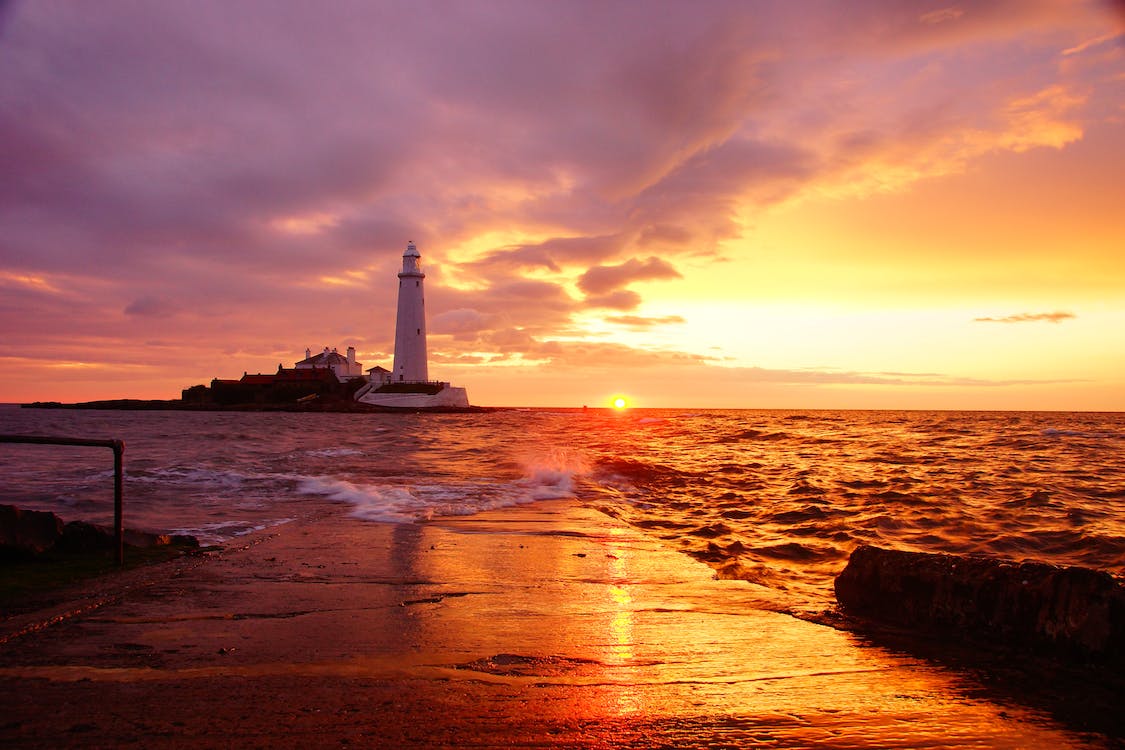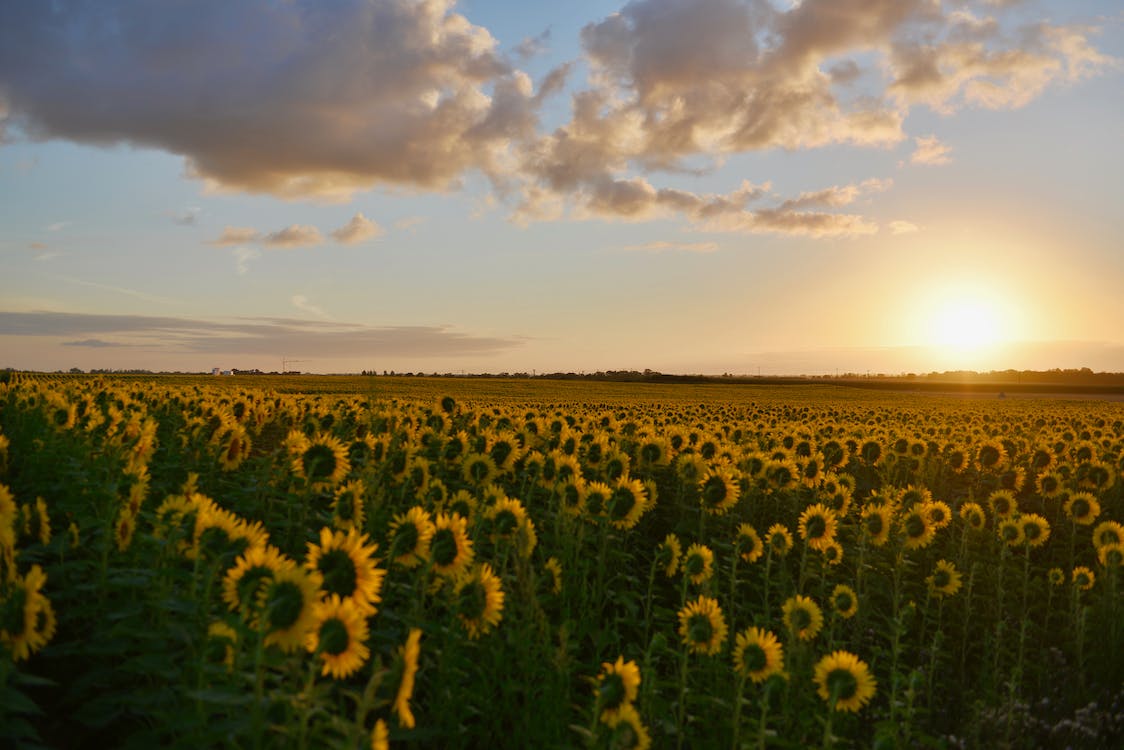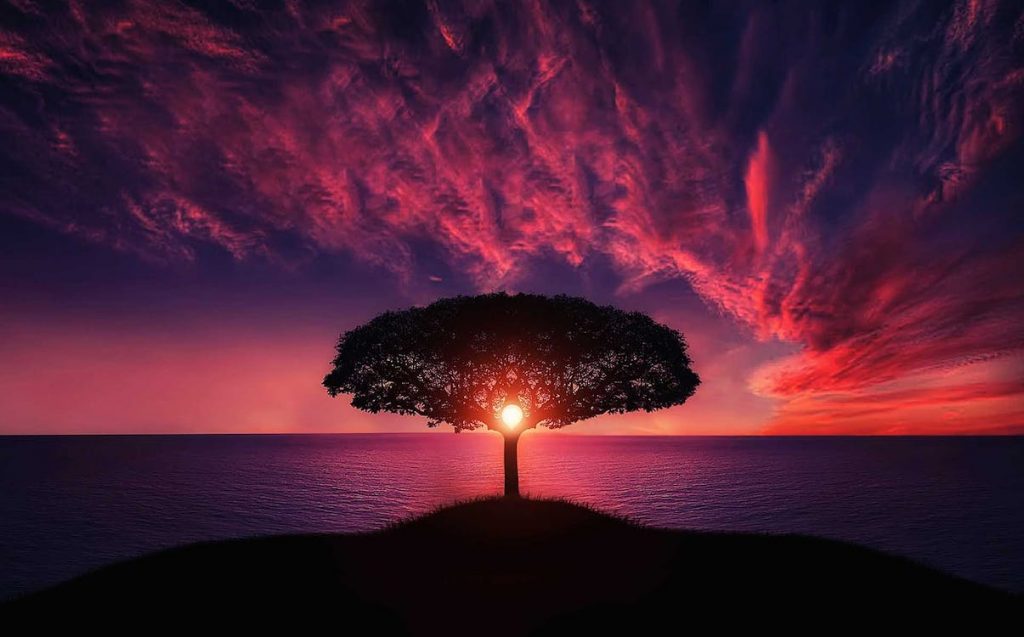Sunset landscape photography – where nature’s canvas is painted with the warm hues of the golden hour. This guide takes you on a journey to capture beautiful sunsets and their landscapes. We’ll cover the theories and techniques for stunning sunset photos, whether you’re a beginner or experienced photographer. So, get your camera, adjust settings, and join us to learn how to capture the magic of the setting sun.
Table of Contents
The Allure of Sunset Landscapes
Sunset landscapes are incredibly captivating. They turn the world into a canvas with warm, soft colors as the sun goes down. The sky can display fiery oranges, deep reds, and subtle pinks and purples. This is a brief reminder of nature’s beautiful art.
Sunset landscape photography stir deep emotions. The fading light and encroaching darkness create a peaceful, reflective atmosphere. It’s a moment to escape the busyness of daily life and appreciate the world in quiet contemplation.
Sunsets also represent endings and fresh starts. When the sun dips below the horizon, it signals the end of one day and the start of another. This transition can bring hope, renewal, and a sense of unity with the universe.
Artists, writers, and photographers have found inspiration in sunset landscapes throughout history. They have a special way of sparking wonder, peace, and a connection with nature. Whether you’re watching from a beach, a mountain, or your backyard, sunset landscape photography remind us of the beauty in our everyday world.
Understanding the Magic Hour
The “Magic Hour” or “Golden Hour” is a special time in photography and film. It’s magical because of its unique lighting, and it happens twice daily – right after sunrise and just before sunset. Here’s why it’s so special:
Soft & Warm Light
In the Magic Hour, the sun is low on the horizon, so its light goes through more of the Earth’s atmosphere. This makes the light softer and golden. It creates long, gentle shadows and gives photos and scenes a pleasing and dreamy look.
Reduced Harsh Shadows
The Magic Hour’s light is gentler than the harsh midday sun. It reduces harsh shadows and lessens the need for extra lights or reflectors. This kind of lighting makes details and textures in your subjects look better. It’s great for portraits, landscapes, and other types of photography.
Vibrant Colors
The warm, golden light of the Magic Hour intensifies colors, giving a rich and vibrant quality to photos. Skies often exhibit shades of pink, orange, and purple, adding to the enchantment of the scene.
Long Shadows
The long shadows cast during this time can add depth, dimension, and a sense of scale to images, making them more visually interesting and storytelling
Mood and Atmosphere
The unique quality of light during the Magic Hour creates a specific mood and atmosphere in photography and cinematography. It often conveys a sense of serenity, romance, or nostalgia, making it popular for capturing emotionally resonant moments.
Versatility
While the Magic Hour is particularly well-known for its effectiveness in outdoor photography and landscapes, it can also be creatively harnessed for various types of photography, including architecture, fashion, and product photography, as well as in filmmaking.
To make the most of the Magic Hour, photographers and filmmakers often plan their shoots around the precise timing of sunrise and sunset. Smartphone apps and various online tools help pinpoint these times based on location. The precise duration of the Magic Hour may vary depending on geographic location and time of year, but its universally appealing qualities continue to make it a favored time for capturing beautiful and evocative visuals.

Silhouettes and Foreground Interest
Silhouettes and foreground interest are two powerful compositional techniques used in photography and visual art to create visually captivating and dynamic images. They play a significant role in adding depth, drama, and storytelling to sunset landscape photography. Here’s an exploration of these two techniques:
Silhouettes are created when the subject appears as a dark, often black, shape against a brightly lit background, typically when the subject is backlit. This technique can be used to produce striking and minimalist images.
Dramatic Contrast
The primary feature of a silhouette is the strong contrast between the subject and the background. This high contrast can create a sense of drama and emphasize the shape and form of the subject.
Storytelling
Silhouettes can convey a story or evoke emotions by focusing on the outline or shape of the subject rather than its details. This leaves room for interpretation and imagination.
Use of Negative Space
Silhouettes often make effective use of negative space, the area surrounding the subject. Negative space can add a sense of balance, simplicity, and elegance to an image.
Backlighting
Achieving a silhouette usually requires placing the subject between the camera and a strong source of light, such as the sun. This technique can be used in various genres of photography, including portraits, landscapes, and wildlife.

Foreground interest involves incorporating objects, elements, or subjects in the foreground of an image to add depth and dimension to the composition.
Depth and Perspective
By placing objects in the foreground, photographers can create a sense of depth in the image. This helps lead the viewer’s eye into the photograph and gives a 3D quality to what is essentially a 2D medium.
Context and Scale
Including foreground elements can provide context and a sense of scale to the scene. This is particularly useful in landscape photography, as it can emphasize the grandeur of a landscape by including objects like trees, rocks, or people in the foreground.
Framing
Foreground elements can be used to frame the main subject or scene, directing the viewer’s attention to the focal point of the image. This framing can create a more visually pleasing and balanced composition.
Visual Interest
Foreground elements can also be used for their own visual interest. Interesting textures, patterns, or objects in the foreground can enhance the overall composition.
Silhouettes and foreground interest, when combined, make images interesting. For instance, having a silhouette in front of a sunset landscape photography adds depth and scale. It keeps the mood and drama of the silhouette. These methods let photographers connect with viewers, share stories, and express feelings through their pictures.

Respecting Nature and the Environment
Respecting nature and the environment goes beyond our individual actions. It means supporting policies that protect the environment. This includes promoting clean energy, stricter environmental rules, and global conservation efforts. Also, our choices as consumers matter. Choosing eco-friendly products, cutting down on single-use plastics, and supporting environmentally responsible businesses all help create a more sustainable future.
Education plays a vital role. It raises awareness about pressing issues like climate change, deforestation, and pollution. Informed people are more likely to make eco-friendly choices and join collective efforts to tackle these challenges.
Moreover, connecting with nature is crucial. Spending time in natural settings helps us appreciate the beauty and fragility of our world. This connection can inspire a sense of responsibility and a desire to protect the environment. Passing on these values to future generations is essential, teaching them the importance of respecting nature and the impact their actions can have on the planet.
In essence, respecting nature and the environment is a comprehensive commitment. It involves our personal decisions, advocacy, education, and nurturing a deep bond with the natural world. It’s not just about preserving the planet for its own sake but also for the well-being of humanity and the countless species we share this precious planet with. It’s a collective effort that, when pursued with dedication and understanding, promises a healthier, more sustainable, and harmonious coexistence with nature.
The Endless Beauty of Sunset Landscape Photography
Sunset landscapes are incredibly captivating and timeless. Each evening, as the sun sets, it treats us to a magical show of colors and emotions.
What makes sunset landscape photography so appealing is their ever-changing and fleeting nature. No two sunsets are the same, and this unpredictability is part of their charm. From the vivid colors of a tropical sunset to the gentle pastels of a coastal evening, each sunset paints a unique picture in the sky.
Sunsets have a strong ability to stir deep emotions. The gradual fading of daylight and the arrival of twilight create a sense of calm and reflection. It’s a moment when the world takes a pause, and nature’s art becomes the center of attention, inviting us to think and find comfort in the beauty around us.
Sunsets are not just visually stunning; they symbolize endings and new beginnings. They mark the close of one day and the anticipation of the next. As the sun says goodbye, it brings feelings of hope, renewal, and a connection to the never-ending cycles of the universe.
Sunsets have inspired artists, poets, and dreamers for centuries. Their beauty has been celebrated in countless works of art and writing, showing the profound impact they have on our hearts. These landscapes are a timeless reminder of the wonder of the natural world.
Whether you see a sunset by the ocean, on a mountain, or in a bustling city, its beauty transcends borders. The everlasting charm of sunset landscapes reminds us of the greatness of our planet and the enchanting moments that await those who take a moment to savor them. They are a testament to the enduring, unmatched beauty of the world we are lucky to call home.
Afterword
We hope that you find this article helpful. Thank you for reading and you’re always free to leave a comment. If you find this article interesting, consider checking out one of our recently published posts. A few of them showcase advancements in technology such as AI Art Generators. On the other hand, if you’re looking towards Photography, we also offer great articles for your inspiration. We also have multiple articles that talk about the various printing mediums for wall art. May these articles give you inspiration for your next print!
Find them here:
Discover the Secret to High-quality Canvas Prints
The 9 Best Canvas Print Companies in 2023
Acrylic Prints: Add Vibrance to Any Space
The Top Food Photography Trends to Try Now
The Ultimate Guide to Continuous Lighting for Photography
Stable Diffusion Tips and Tricks
Best AI Art Generator for Android Phones 2023
We enjoy reading your comments and insights with our posts! Should you have any questions or concerns, feel free to leave them below! -Mark

